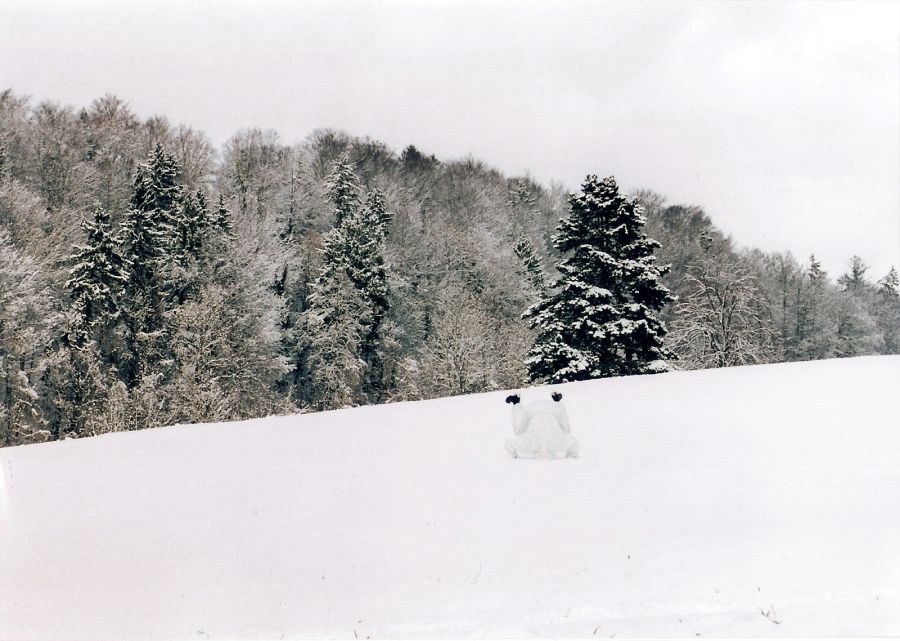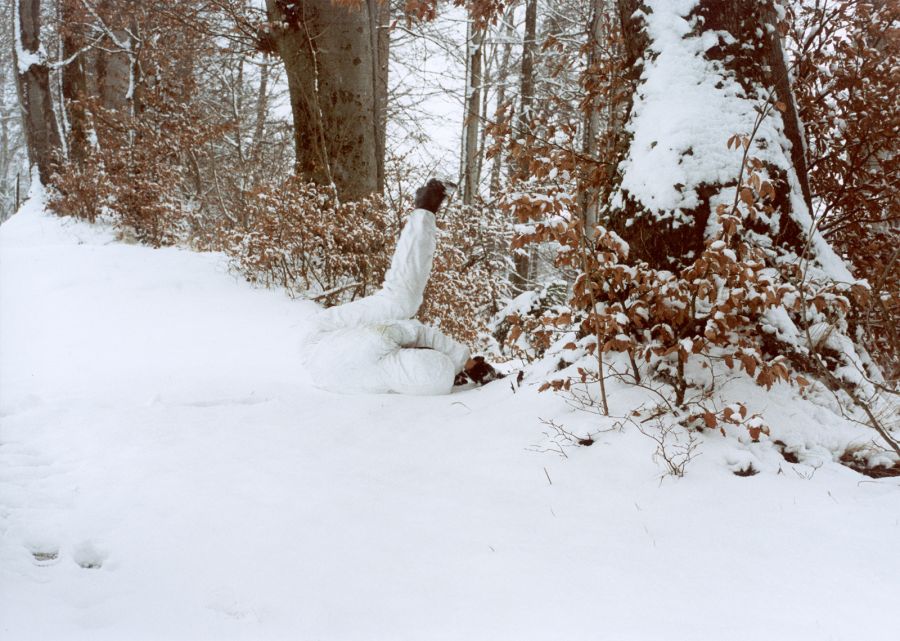White Balance
Fotoserie 1 - 8 | C-Print Grossformat | 2008
Der Weissabgleich (engl. white balance, WB) dient dazu, die Kamera auf die Farbtemperatur des Lichtes am Aufnahmeort zu sensibilisieren. Auch das menschliche Auge verfügt über diese Fähigkeit der chromatischen Adaption. In der Physiologie automatischer Weissabgleich (White balance) genannt, ist die Fähigkeit des Auges durch die der Mensch einen Wechsel der Farbtemperatur des Umgebungslichtes subjektiv kaum wahrnimmt. So wird ein weißes Blatt Papier sowohl unter Kunst-, als auch unter Tageslicht immer als gleich weiß angesehen.
Fotographien von Schneelandschaften. Bei näherem Hinschauen ist eine weissgekleidete Figur wahrnehmbar, die im Schnee liegt. Gefallen? Geworfen? Woher kommt sie? Was ist ihr zugestossen? Wieder ist der Aspekt der eigenen Wahrnehmung und der eigenen Klärung gefordert. Der Mensch fühlt, wie „fremd” alles ist, die Außenwelt und ihre Sinnlosigkeit bringen ihn, der stets nach Sinn strebt, in existentielle Konflikte. Dabei macht das Absurde vor niemandem halt. Dies stammt aus der Gedankenwelt von Albert Camus, der sich Zeit seines Lebens mit dem Absurden auseinandersetzte: „Das Absurde kann jeden beliebigen Menschen an jeder beliebigen Straßenecke anspringen”. Für Camus besteht das Gefühl des Absurden also in der Entzweiung des sinnstrebenden Menschen und der sinnleeren Welt.
The white balance (WB) is used to make the camera sensitive to the color temperature of the light at the shooting location. The human eye also has this ability of chromatic adaptation. In physiology called automatic white balance, the ability of the eye is the ability of the human eye to perceive a change in the colour temperature of ambient light subjectively. Thus, a white sheet of paper is always considered equally white under artificial light as well as under daylight.
Photographs of snow landscapes. On closer inspection, a white-clad figure lying in the snow can be perceived. Fallen? Thrown? Where does it come from? What happened to her? Again the aspect of one’s own perception and clarification is called for. Man feels how “strange” everything is, the outside world and its senselessness bring him, who is always striving for meaning, into existential conflicts. The absurd does not stop at anyone. This comes from the world of thought of Albert Camus, who dealt with the absurd throughout his life: “The absurd can jump at any person on any street corner”. For Camus, the feeling of the absurd thus consists in the separation of the sense-seeking person and the senseless world.







